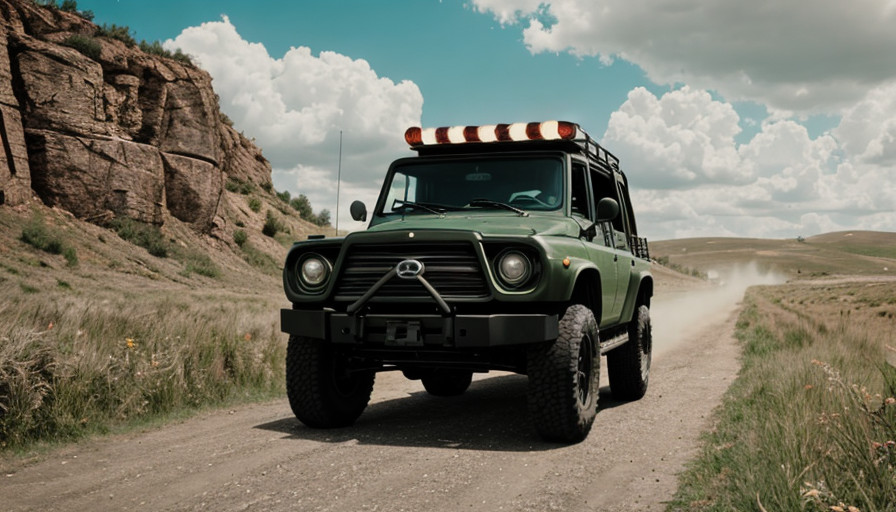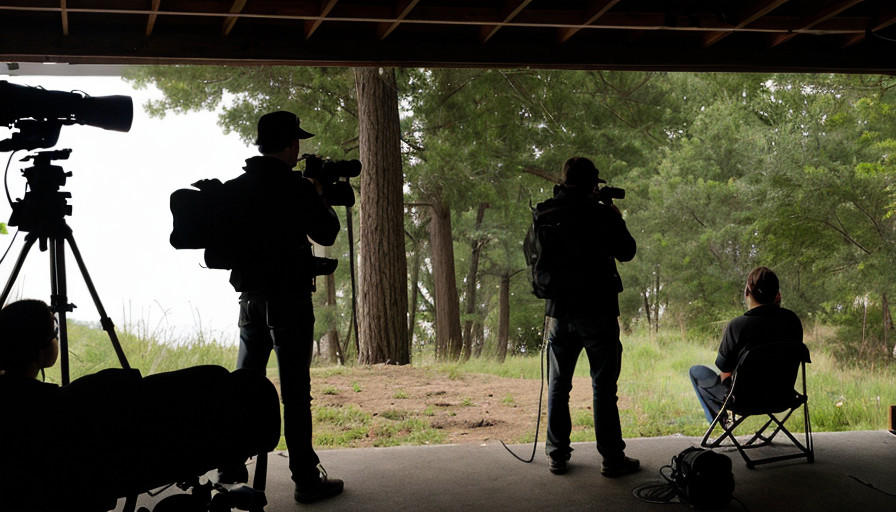From the training sequences in Rocky to the transformation montages in countless romantic comedies, we’ve all witnessed that magical technique of storytelling – the montage.
But have you ever paused to wonder why filmmakers repeatedly use this method? Why are montages used in films? Strap yourself in and prepare for a cinematic journey as we uncover the artistry and psychological power behind this fascinating tool.
Montages have been an essential part of cinema since its inception, condensing time, enhancing narratives, and punctuating critical points within a story.
They invite us into a world beyond words, where images alone carry meaning. As we delve deeper into understanding why filmmakers utilize montages, you’ll gain a fresh perspective on this often-overlooked yet influential aspect of film-making.
Understanding Montages in Film.
The montage, an invaluable storytelling device in filmmaking, serves multiple pivotal roles that influence narrative rhythm and pacing.
It has the potent power to compress time, showing events unfolding over weeks or even years within a brief span of moments – allowing filmmakers to lead viewers through complex scenarios without resorting to tedious exposition.
From training sequences in sports dramas like Rocky, where the boxer’s strict regimen is crystallized into brisk shots that accelerate his path to the championship, to memory sequences in films as diverse as Eternal Sunshine of the Spotless Mind and Up, montages create a fluid connection between different stages of character development.
Interestingly, beyond fundamentally altering our perception of time passage in film narratives, montages also strategically evoke emotional shifts and metamorphoses. They act as bridges connecting not just disparate frames but varied emotions as well.

In romance movies such as Casablanca or The Notebook – when one minute lovers are separated by insurmountable obstacles only for those barriers to suddenly dissipate within a few rapid-fire images strung together – these schisms demonstrate how expertly crafted montages can seamlessly transition us from despair to elation.
Remember: With every cut and splice—every masterstroke of editorial creativity—explores profound depth behind characters’ actions within constricted movie runtime while enhancing cinematic mood swings.
Concept of Montage: A Brief Overview.
Dancing on the coalescence of diverse elements, montages encapsulate the magic of moments in a swish, transporting viewers through time and space.
A powerful cinematic technique often celebrated as the pinnacle of film editing, montage permits filmmakers to articulate a story or express an idea via an amalgamation of rapid shots. It’s that special locomotive power stimulating narrative momentum with a free-ranged rhythm.
Sprouting from the fertile ground of Soviet film theory, specifically from great minds like Sergei Eisenstein and Dziga Vertov, the concept of montage is rooted deeply into artistic interpretation and cognitive perception.
It’s transitionally fluid yet evolutionary in nature; its competence lies in its ability to be both transformative and connective.
Whether it’s showcasing Rocky Balboa’s triumphant determination over multiple training sessions or capturing Carl and Ellie’s lifelong love affair in ‘Up,’ montages not just weave sequences but also cultivate emotions- all within limited screen time.
Nevertheless, despite bearing postmodernist complexity, the grandeur simplicity boasted by montages secures their place in films across varied genres.
In essence, they choreograph cinematic ballets where scenes pirouette around each other creating concise narratives that are visually mesmerizing yet emotionally resonant.
Montage essentially stands as an embodiment of filmmaking creativity operating under temporal constraints while never compromising on storytelling artistry.
History and Origin of Montages.
Birthed in the significant cradle of early Russian cinema, montages came to life as an innovative editing technique. Sergei Eisenstein, a name now echoed with reverence in film circles, was the orchestrator of this distinctive film language during the 1920s.
His belief that juxtaposing unrelated shots could generate new ideas and emotional resonance led him to pioneer this technique- creating a rhythm and narrative through concise visual snippets.
Montage theory swiftly transcended its initial birthplace. Its dynamism caught the eye of Hollywood luminaries who adapted it expertly into their narrative style.
Perhaps one of the most memorable utilisations is seen in Rocky’s iconic training sequence; an effective shorthand boosting narrative progression whilst intensifying emotional engagement within audiences – demonstrating brilliance and brevity all at once.

The concept has since evolved massively with time, technology playing major roles towards innovative applications of montages across diverse media forms – music videos to advertorials, documentaries to blockbusters.
This journey from early Soviet silent movies towards technicolor epochs across cinema worldwide highlights how inventively mankind wields art and technology to craft compelling storytelling magic . A testimony illuminating montage’s influential legacy on our visual culture!
Purpose of Using Montages in Films.
A montage in a film is more than just a compilation of scenes. Indeed, it’s a fast-working artistic tool that provides filmmakers with the possibility to unpack chunks of narrative, show character evolvement and operationalize time compression. This transitional technique not only keeps the momentum of the story going but also effectively shows progression or passage.
The enchantment behind using film montages lies in its potency to encapsulate vast arrays of information into small snippets without losing track of coherence. Through rapid sequences depicting imagery, emotions and movements, they beautifully articulate what would have otherwise demanded immense screen time.
Similarly intriguing is their ability to induce ‘synthetic’ relationships between shots – spotlighting the heightened psychological understanding or emotional state attained through their juxtaposition.
Film montages hold an unusual charm that breaks traditional storytelling norms by hurling audiences into multiple dimensions simultaneously, making them irresistibly immersive.
They ingeniously weave together different pieces and places, construing an amplified visualization that allows viewers not just to see but truly feel and grasp intricate levels of depth present within the storyline — all this splendor within minutes!
Examples of Noteworthy Film Montages.
An undeniably iconic film montage hails from Sylvester Stallone’s Rocky. The training sequence emotionally engages the audience, inviting them to travel alongside the underdog’s journey of unprecedented hard work, determination and grit. Interestingly, without a single dialogue being spoken, we perceive Rocky Balboa’s evolution from a bum into a serious contender.
Another superb use of montage is exhibited in ‘Up,’ particularly during its heart-wrenching opening sequence. This Pixar masterpiece cleverly employs montage to encapsulate an entire lifetime – exploring themes of love, dreams, obstacles and ultimately, loss. The poignant narrative arc unfurls silently within mere minutes yet leaves audiences with lasting impressions.
Ridley Scott’s masterpiece ‘Blade Runner’ also incorporates an enthralling montage sequence involving futuristic photos that Detective Deckard investigates.
Employing advanced technology, an unheard-of concept at the time itself becomes part of the narrative featuring eerie holographic images providing pivotal clues leading him closer to rogue replicants hiding in plain sight.
In essence? These montages aren’t just crude assembly of related or consequential scenes; they are films within films displaying coherent storytelling mastery while pushing cinematic boundaries.
Impact and Effectiveness of Montages.
Undoubtedly, montages are game-changers in film aesthetics and narrative shaping. Implementing them allows filmmakers to condense extended periods, showing character progression or landscape transitions without consuming too much screen time.
They reflect a sense of movement and passage of time, demonstrative of the director’s profound visual storytelling prowess. Through compelling fragments of action stitched together seamlessly, they cultivate an evocative cinematic experience that can prompt powerful emotional reactions from audiences.

The effectiveness of montages is deeply anchored in their ability to expedite complicated narratives. Subtly sprinkled between major scenes, they can propel the storyline forward or enhance characters’ depth by illustrating unseen sides of their lives.
The intelligent use can convey complex thoughts efficiently, pushing viewers’ imagination beyond face value events and into deeper thematic realms. Montages allow for contextually richer representation within films – offering not just speed but also intense emotionality which provokes further intellectual engagement.
Illustrating the sheer transformative power embedded within montage-usage is Charlie Chaplin’s ‘Modern Times.’ By allowing viewers to observe the protagonist fluctuate between numerous jobs in an accelerated fashion, Chaplin conveys the desolation endured during The Great Depression – a powerful message conveyed through seconds rather than elongated scenes.
Instances such as these underscore how crucial montages have been – and continue to be – for advancing cinematic artistry and nuance within our narratives.
Role of Montages in Storytelling & Character Development.
Montages have been an integral part of storytelling and character development ever since the advent of cinema. They play a crucial role in showcasing a progression or transformation that the character goes through, often spelling out their journey from novice to expert or displaying emotional growth.
Montages, with their rapid transitions and changing scenarios, not only accelerate the narrative but also create strong visual impressions about characters’ evolving capacities and scopes.
Moreover, montages can be viewed as a tool to depict complex thoughts or ideas without being tied to linear time sequences. For instance, they can convey years worth complexities within mere minutes by focusing on selected moments symbolizing significant shifts in life-choices,pathways or dynamics among characters.
This consolidated representation creates a more immersive experience for viewers – something piecemeal scenes may fail to deliver. In essence, montages are deeply profound cinematic devices for encompassing time lapse while also leading the audience closer towards empathizing with characters on screen.
Lastly, it’s noteworthy that montages possess an allure of poetic symbolism too; they allow filmmakers to subtly interweave symbolic elements into story arcs. They cleverly incite intrigue among viewers – hinting at possible future developments or unravelings yet maintaining suspense simultaneously.
Hence,Montages offer creative breathing space for nuanced storytelling – endowing us with memorable sequences which resonate long after we’ve left the theaters.
Types of Montage in Film.
Diving into the world of cinema, we encounter a multitude of ways filmmakers tell their stories. One such technique is the montage, which is essentially a creative composition of brief shots sequenced together to convey a narrative progression. There are fascinating variations on this intriguing element of filmmaking that all have unique implications for storytelling.

Take the Metric montage for example, it’s an embodiment of pure cinematic rhythm and pace that pays no heed to what is happening within each shot.
The filmmaker uses the principle of duration alone – rendering number and length as supreme orchestrators in sequencing shots together; implicitly making viewers perceive emotions based on this tempo, offering them a visceral engagement with the film’s narrative fabric.
Then there’s thematic montage- an enduring favorite among visionary filmmakers aiming to explore universal human experiences through symbolic imagistic language.
Also known as symbolic or ideological montages, they weave sequences that leap over logical reasoning to encode deep meanings about society or humanity as a whole.
Through suggestive juxtapositions – an ironic dialogue between famine scenes and decadent high society feasting perhaps – there emerges a broader consciousness than what raw scripts can offer. Thus, employing montages enhances both filmmaker creativity and audience interpretative richness.
Conclusion: The Power and Importance of Montages.
In conclusion, the significance of montages in films is undeniable. They hold unique transformative power, allowing us to witness a character’s development, pass time effectively or encapsulate complex narratives all within short and beautifully crafted sequences.
But more than mere technical tricks used for jogging us along in the story, they help filmmakers transcend language barriers with the universal language of imagery.
Could an actor verbally express all the emotions as effectively or swiftly as a well-placed montage? Perhaps not. Montages tap into our innate ability to read and interpret visual cues allowing us to feel rather than just comprehend the information.
Therefore while words can coin tales and delineate ideas; it’s truly that cinematic dance of images and sounds found in montages that underscores many filmmaking masterpieces. You should read another article >>>> Why Do Filmmakers Make Changes to the Story?.

I am a highly experienced film and media person who has a great deal to offer to like-minded individuals. Currently working on several exciting projects, I am a film and media practitioner for over a decade. I have achieved a great deal of success in my professional career.





